About the survey
As part of the 2022-23 practising certificate renewal process, we invited Victorian lawyers to share their recent experiences of providing legal services to their clients.
The survey was designed to capture lawyers’ perspectives on lawyer-client relationships to complement the information we regularly receive from legal clients through our complaints-handling function and other sources. The survey results give us a more nuanced, deeper perspective on many of the factors that shape lawyer-client relationships – as well as insight into factors that may give rise to complaints.
The survey focussed on lawyers’ experiences of providing legal services to their clients, including key relationship issues and challenges. It asked lawyers to identify pressure points based on their experiences with a recent client (rather than their general experiences) – from the first client meeting through to costs disclosure and disputes.
We received 544 responses to the survey. However, the number of respondents varied for each question as all questions were optional. Additionally, some questions were designed to delve into preceding responses. If the leading question was not answered, the follow-up questions were not asked.
We thank all of the lawyers who participated in this survey for sharing their invaluable insights. We will use the survey results to inform our future work.
Headline results
One of the survey’s key findings was that more than 80% of respondents believed their clients were experiencing stress. Concerningly, more than half of the lawyers reported that their client was experiencing significant or extreme emotional stress. Work-related, financial and health-related stresses were also widely reported.
The wellbeing of clients provides important context for the other key survey findings. For example, the survey showed lawyers think the most significant cause of communication challenges stems from their client’s mental health (50%).
Of the 544 lawyers surveyed, 42% experienced challenging client behaviour. The most commonly reported behaviours were rudeness (51%), hostility (42%) and aggression (29%).
Another key finding of the survey is that Victorian lawyers are working proactively to manage their relationships. The majority of lawyers surveyed had clear goals for their first client meeting and about 90% discussed costs with an “engaged” client before they were retained. However, it’s worth noting that most lawyers took what might be described as a fairly passive approach to ensuring that their clients understood the costs disclosure, with the most common methods being advising their clients to read the costs disclosure and let them know of any questions or getting clients to sign the disclosure or costs agreement to acknowledge their understanding and consent.
While 35% of lawyers reported that there were no factors negatively affecting their working relationship with their client, others struggled with various relationship issues. The most common were clients’ unrealistic expectations about what could be achieved and difficulty in getting high-quality instructions.
Detailed results
Client stress
Most lawyers reported that their recent client was facing emotional, financial, work-related or health-related stress. Of concern, more than half came to their lawyers with significant or extreme levels of emotional stress.
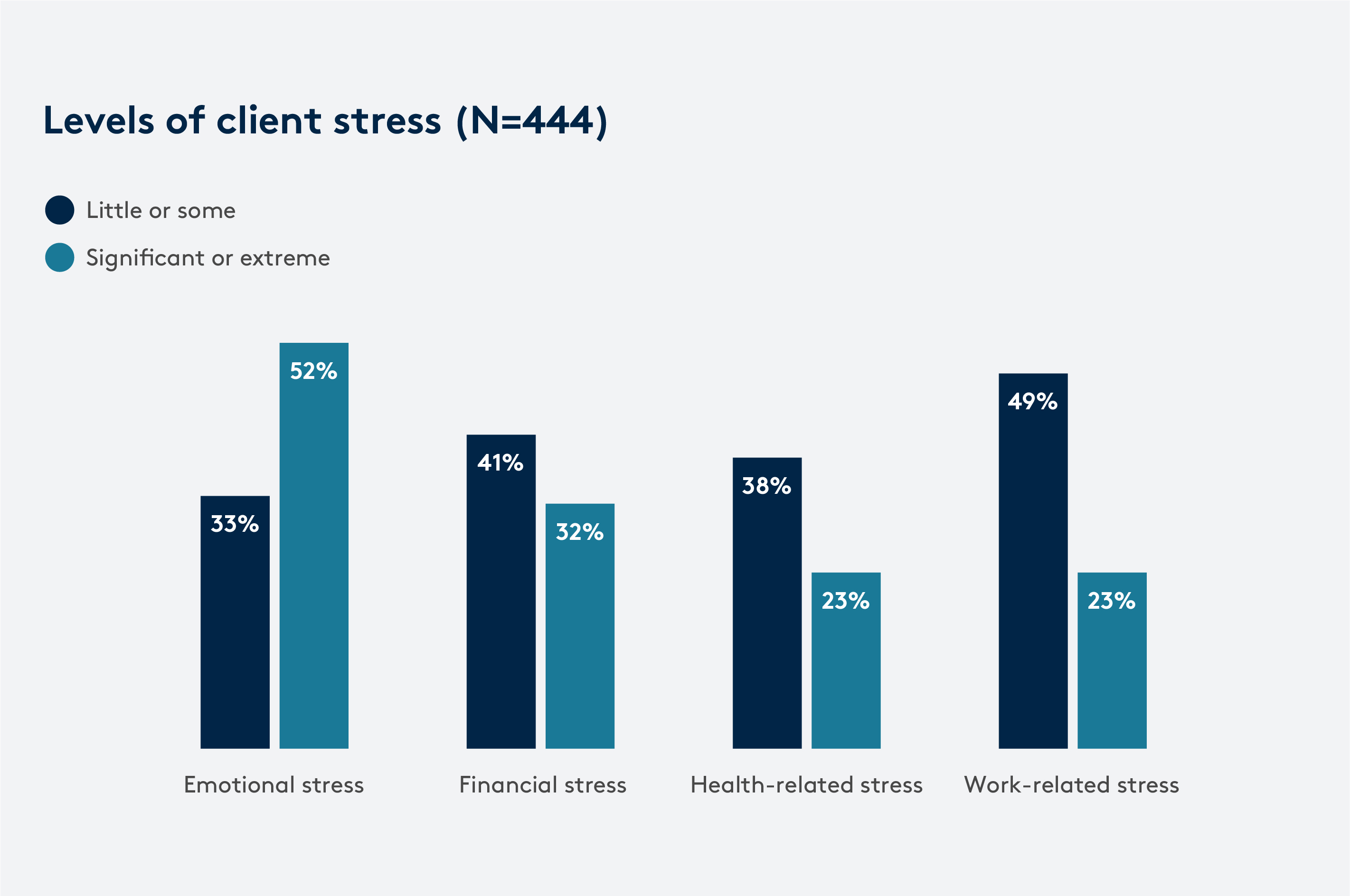
Communication challenges
Around 53% of respondents did not experience challenges in communicating with their clients.
Of those who did, half indicated that this was due to their client’s mental health.
Low literacy (21%), lack of common language (20%) and a client’s cognitive or learning disability (15%) also made communicating with clients challenging for some lawyers.

Behavioural challenges
Most lawyers surveyed (58%) said their clients did not demonstrate any challenging behaviours. Of the 40% who did, the most commonly experienced were rudeness (51%), followed by hostility (42%) and aggression (29%).

First meeting goals
We asked lawyers to select as many options as they wanted from a list of goals that they sought to achieve by the end of their first client meeting.
They most commonly chose ensuring that their client had realistic expectations and goals about what could be achieved (81%), understanding what was important to their client (72%), establishing a trusting relationship (72%) and ensuring they had high-quality instructions (71%). While ensuring the client understood the likely costs was least often selected, it was still chosen by 56% of respondents.
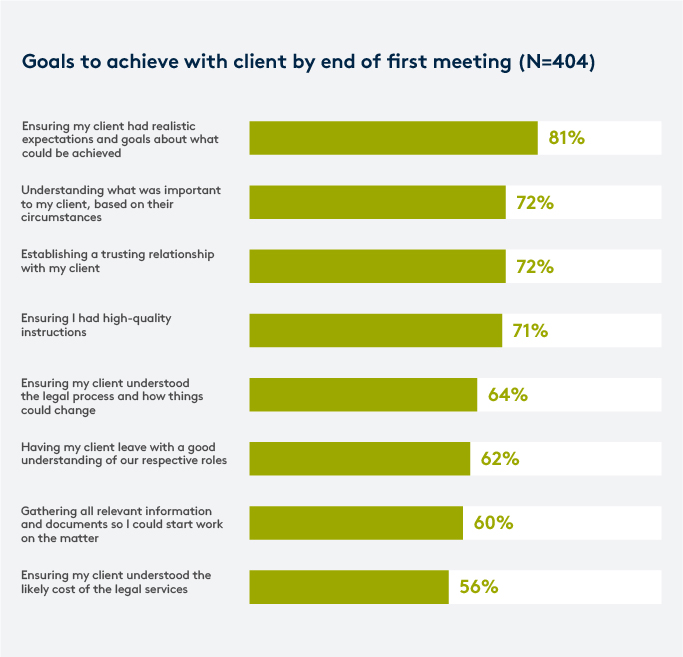
Factors affecting working relationships
Just over a third (35%) of lawyers reported that there were no factors that negatively affected their working relationship with their client. For the balance of respondents, clients’ unrealistic expectations was the top challenge (55%) in their working relationship – despite ensuring that their client had realistic expectations also being the top goal many respondents sought to achieve by the end of the first meeting.
Other challenges included difficulty in getting high-quality instructions (52%), and clients challenging their lawyer’s advice (30%) or not understanding the legal process (28%).
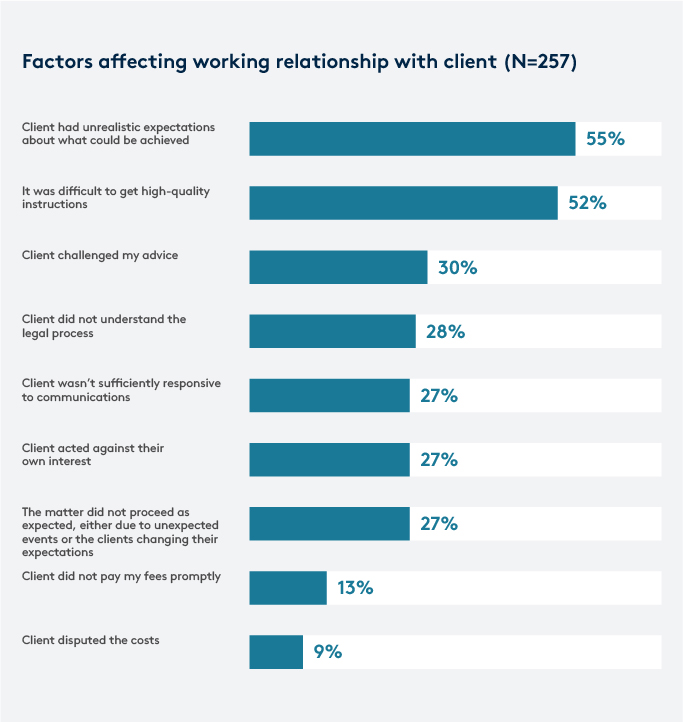
Costs
Of the lawyers who were required to provide costs disclosure and those who weren’t because their costs were likely to be less than $750, 89% discussed costs with their clients before they were retained.
Positively, 91% of respondents found their clients engaged in the discussion to some degree (engaged or very engaged 66% and somewhat engaged 25%).
Most lawyers took what might be described as a fairly passive approach to explaining written costs disclosures to their clients, with the most common methods being advising their clients to read the costs disclosure and let them know of any questions (63%) or getting their clients to sign the disclosure or costs agreement to acknowledge their understanding and consent (59%).
Only one third of respondents talked their client through the document and asked if they had any questions. Fewer than one in five asked their client to tell them what they understood about the likely costs.
These results should be read in the context that almost three quarters of respondents said their client was somewhat experienced or experienced in using legal services. However, as we also know that most lawyers thought their client was experiencing at least one form of fairly significant stress at the time, a client’s ability to absorb complex costs documents without further explanation may have been hindered, and we would encourage lawyers to proactively check with their clients to ensure they understand the information.
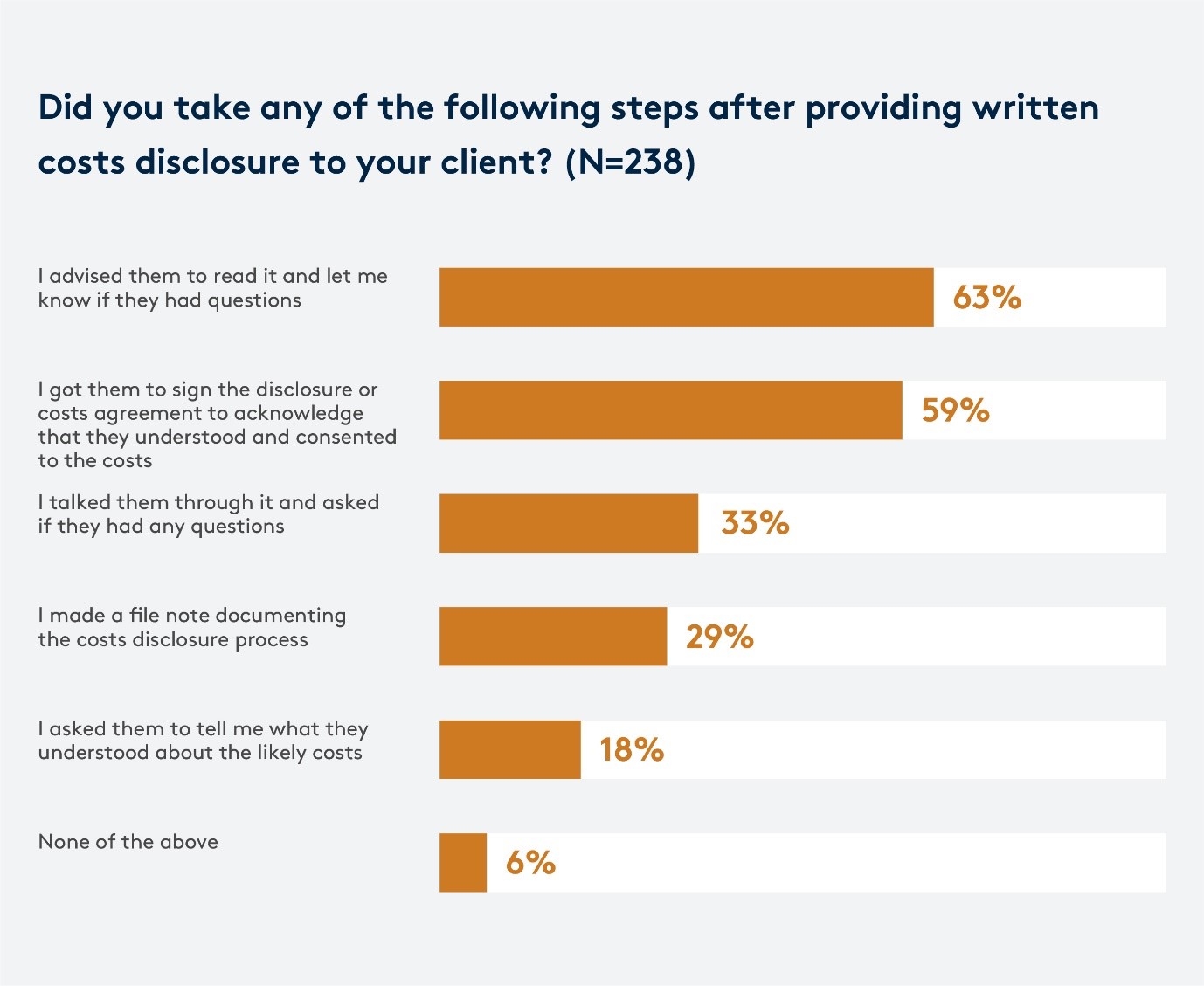
Encouragingly, most lawyers (77%) did not find it challenging to provide costs disclosure to their clients, and most (67%) also did not find it challenging to provide an updated costs disclosure to their clients.
Of the 23% of lawyers who found it challenging to provide costs disclosure, most were concerned about considering the uncertainties of the circumstances (83%), calculating a single figure estimate (rather than a range) (74%), and the scope of work not being clear at the time disclosure was required (71%).
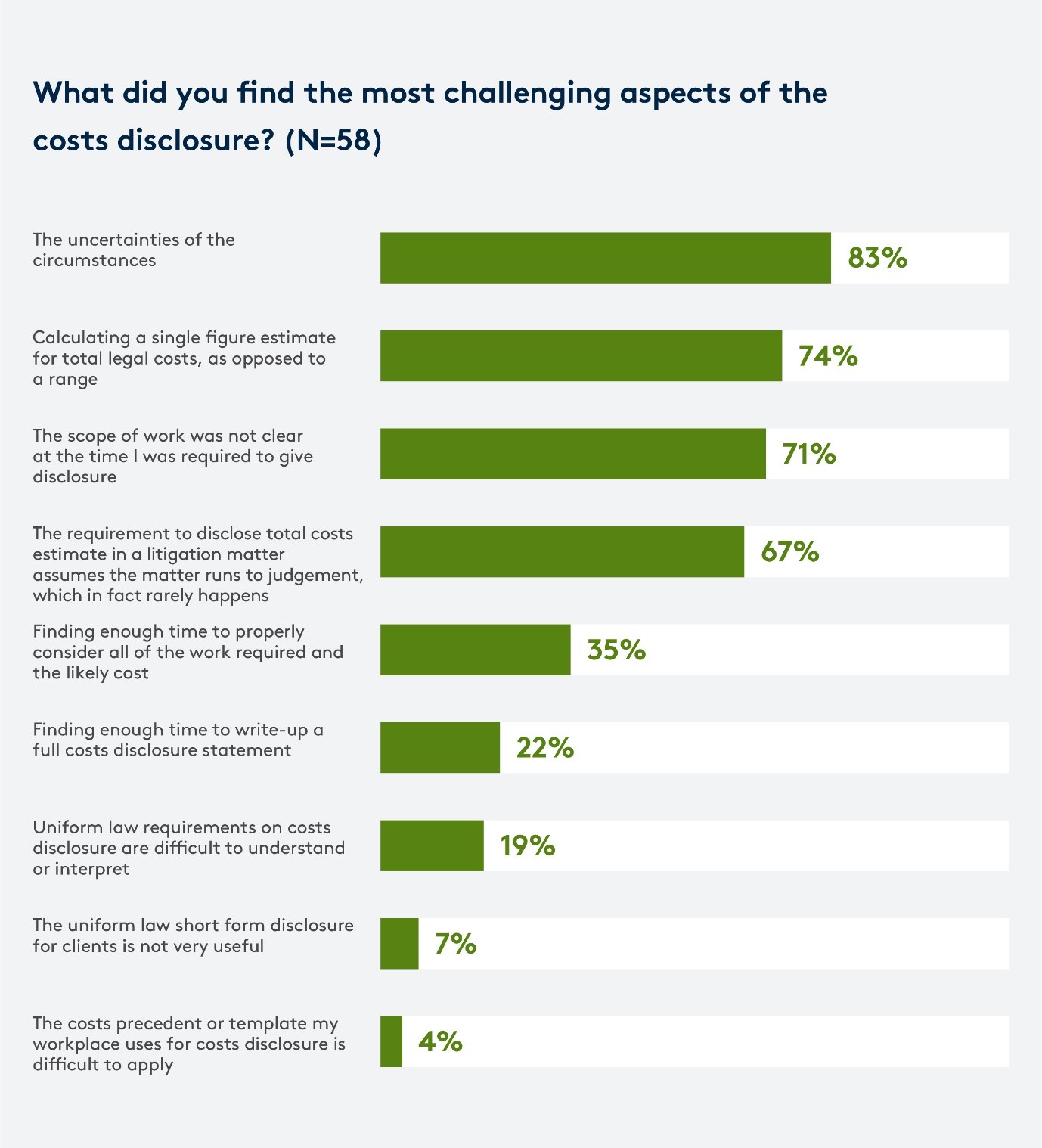
Similar concerns about calculating a single figure estimate faced the 33% of respondents who found providing updated costs disclosure challenging. They also reported being challenged by finding the time to provide the update and how their client would react.
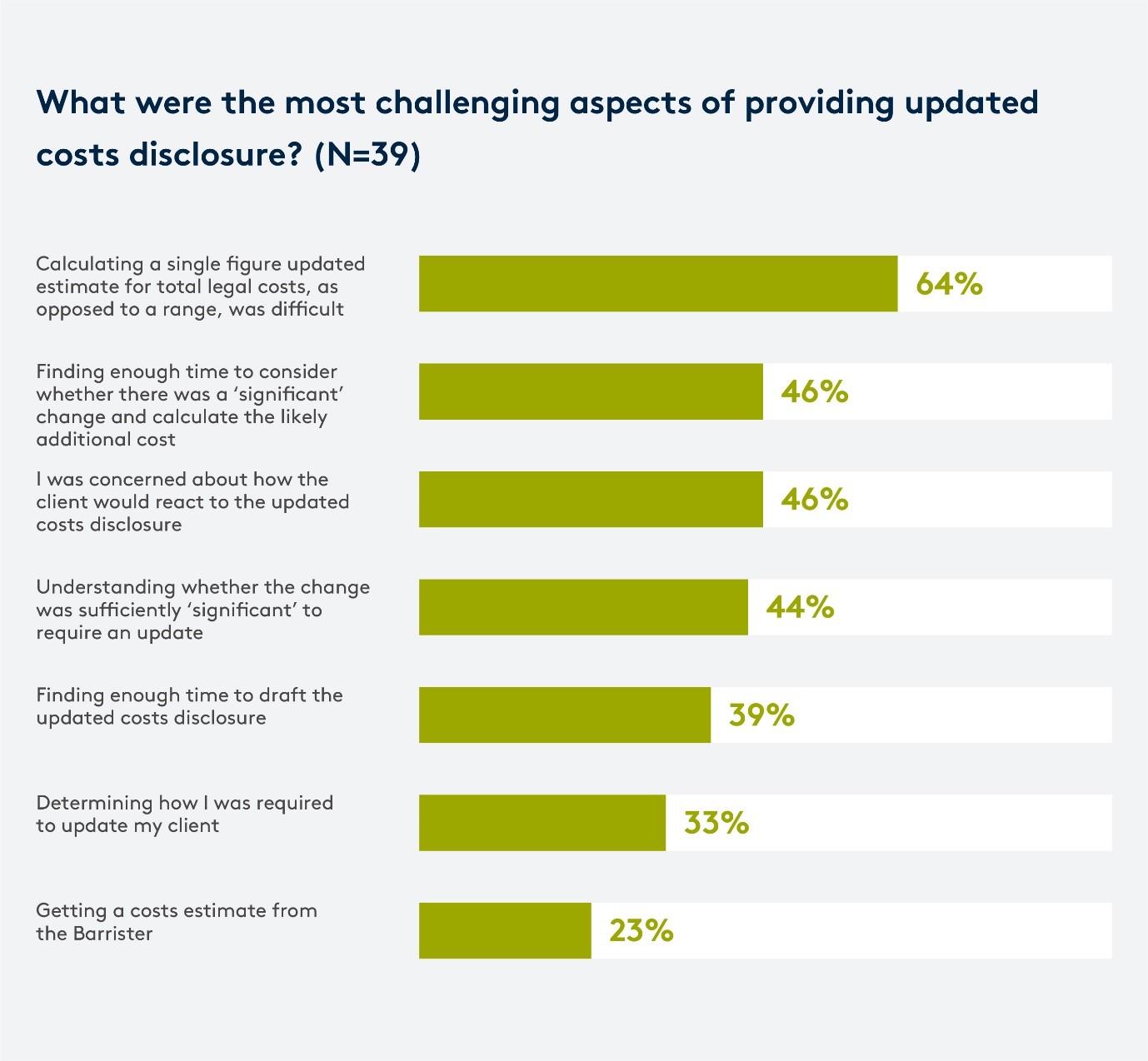
Among the small number of lawyers (32) who reported that their client had expressed dissatisfaction with their final bill, most indicated that this was due to clients expecting their costs to be lower (44%) or clients not being satisfied with the outcome of their matter (38%).
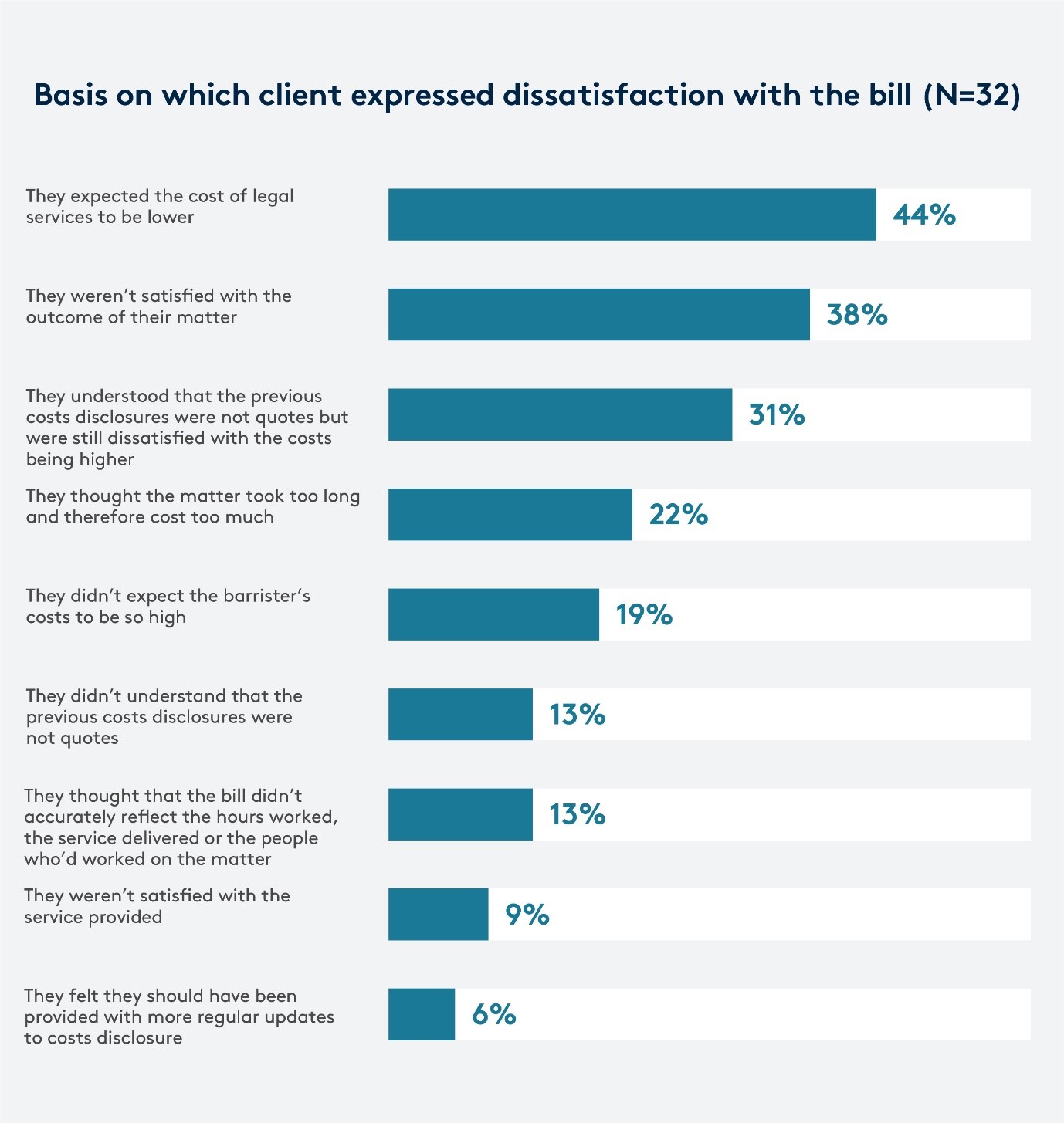
Our next steps
This survey has given us valuable information about the lawyer-client relationship from the lawyers’ perspective. It will be used to inform our future work and research in this area, and has highlighted to us the need to develop tools and guidance for the profession to help them with some of the challenges the survey data revealed.